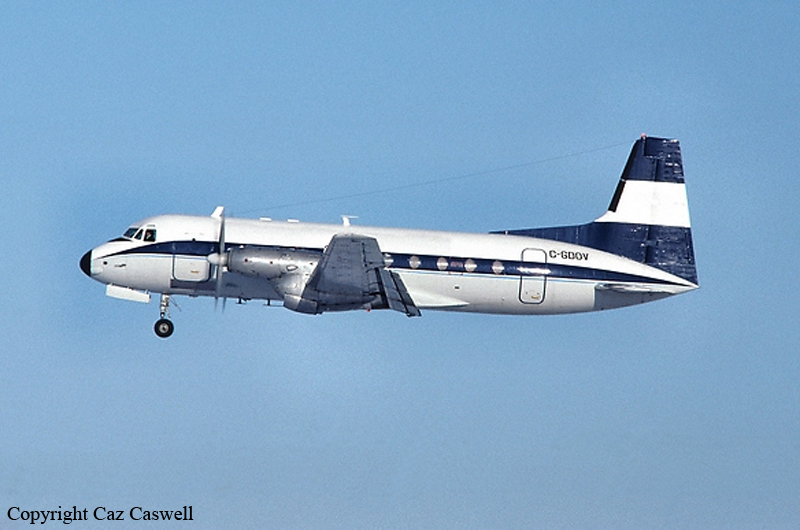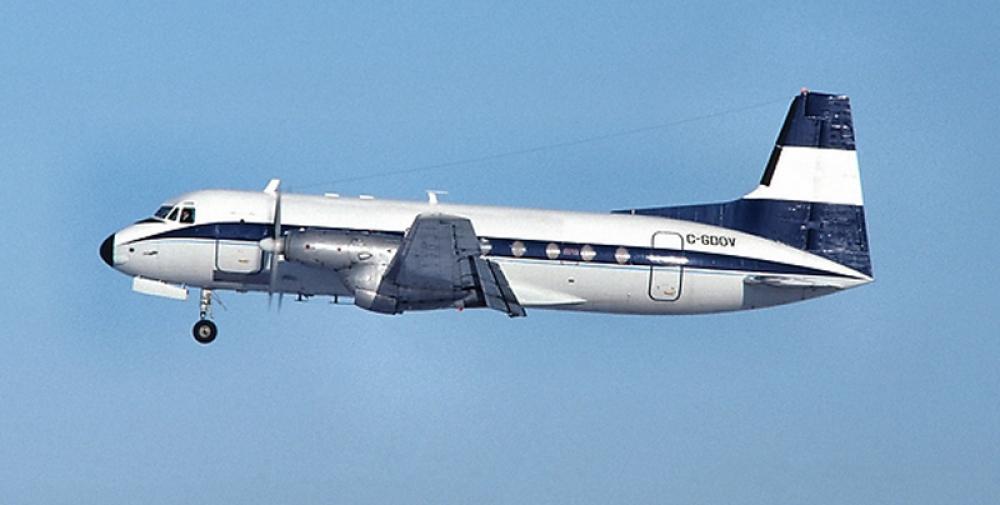Date & Time:
Jan 12, 1989 at 0445 LT
Type of aircraft:
Avro 748
Registration:
C-GDOV
Flight Phase:
Takeoff (climb)
Flight Type:
Cargo
Survivors:
No
Schedule:
Dayton - Montreal
MSN:
1582
YOM:
1966
Country:
United States of America
Region:
North America
Crew on board:
2
Crew fatalities:
2
Pax on board:
0
Pax fatalities:
0
Other fatalities:
0
Total fatalities:
2
Captain / Total hours on type:
3200
Aircraft flight hours:
35817
Circumstances:
During night cargo operation, check captain (right seat) was evaluating the 1st officer (f/o, left seat) for possible upgrade to captain. Before departing, flight was cleared for right turn after takeoff to 020°. Takeoff began at 0441:11. Water/methanol injection was used (to 1st power reduction). At 0441:49, landing gear was retracted; 8 seconds later 1st power reduction was made, then a frequency change was approved. Captain noted they should climb to 1,500 feet msl (approximately 500 feet agl) before turning. At about 300 feet agl, aircraft entered overcast and began a steep right turn. CVR indicated captain was performing cockpit duties at this time and giving info to f/o about the departure. FDR showed aircraft reached max alt of 423 feet agl and began descending. At 0442:22, captain remarked to f/o, 'don't go down . . . Get up . . . Up up up . . . Up, oh!' At about that time, aircraft hit in an open field, but continued flying for approximately 3/4 mile. It then hit a tree and crashed in a wooded area. Investigation revealed that during several training flights and 2 check flights, the f/o demonstrated difficulty in performing instrument flight due to disorientation, narrow focus of attention, or lack of instrument scan (instrument fixation), especially during high task workload. Both pilots were killed.
Probable cause:
Improper IFR procedure by the first officer (copilot) during takeoff, his lack of instrument scan (improper use of flight/navigation instruments), his failure to maintain a positive rate of climb or to identify the resultant descent, and the captain's inadequate supervision of the flight. Contributing factors were: dark night, low ceiling, drizzle, the first officer's lack of total experience in the type of operation, and possible spatial disorientation of the first officer.
Occurrence #1: in flight collision with terrain/water
Phase of operation: takeoff
Findings
1. (f) light condition - dark night
2. (f) weather condition - low ceiling
3. (f) weather condition - drizzle/mist
4. (c) ifr procedure - improper - copilot/second pilot
5. (c) flight/navigation instrument(s) - improper use of - copilot/second pilot
6. (c) climb - not maintained - copilot/second pilot
7. (c) descent - not identified - copilot/second pilot
8. (f) spatial disorientation - copilot/second pilot
9. (f) lack of total experience in type operation - copilot/second pilot
10. (c) supervision - inadequate - pilot in command
----------
Occurrence #2: in flight collision with object
Phase of operation: other
Findings
11. Object - tree(s)
Occurrence #1: in flight collision with terrain/water
Phase of operation: takeoff
Findings
1. (f) light condition - dark night
2. (f) weather condition - low ceiling
3. (f) weather condition - drizzle/mist
4. (c) ifr procedure - improper - copilot/second pilot
5. (c) flight/navigation instrument(s) - improper use of - copilot/second pilot
6. (c) climb - not maintained - copilot/second pilot
7. (c) descent - not identified - copilot/second pilot
8. (f) spatial disorientation - copilot/second pilot
9. (f) lack of total experience in type operation - copilot/second pilot
10. (c) supervision - inadequate - pilot in command
----------
Occurrence #2: in flight collision with object
Phase of operation: other
Findings
11. Object - tree(s)
Final Report:
C-GDOV.pdf92.72 KB


